This Week At Angama #76
19 July 2019 | This Week at Angama | Adam Bannister
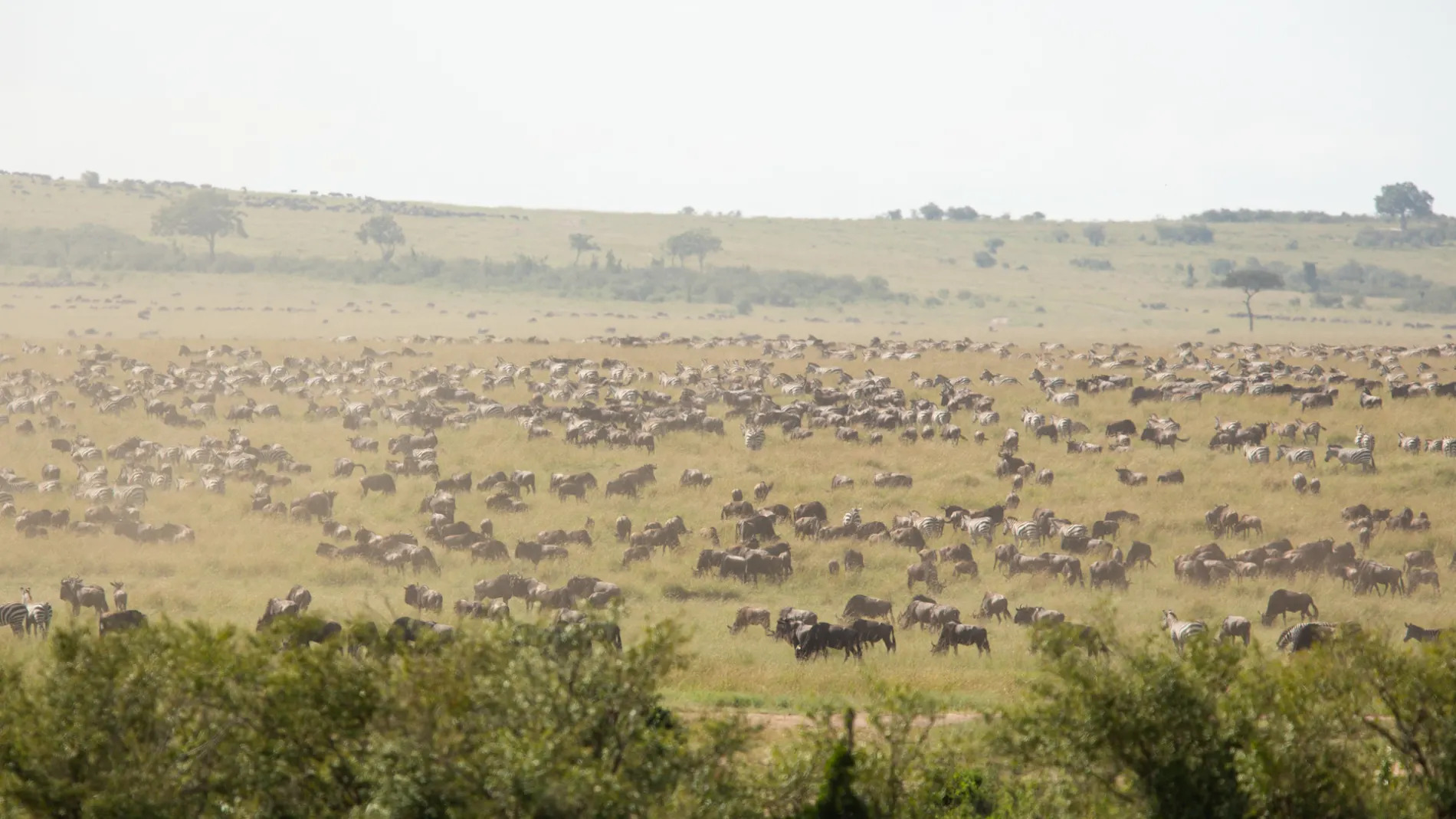
A month ago, we witnessed a false start of the migration – thousands upon thousands of wildebeest stormed into the Mara Triangle, before turning around two days later and running back south. In their wake, they left an eerie silence and had everyone hypothesising on what had just happened. Everything about it was unpredictable and unexpected. But so is the nature of the gnu. [f 4.5, 1/2500, ISO 400, +0.33]
It appears, however, as though some sort of order has been restored in this part of East Africa. Tens of thousands of wildebeest and zebra are now moving steadily into the Mara, crossing the Sand River, from the Serengeti. There is an energy of expectation in the air – this week the dramatic crossings of the Mara River have begun.
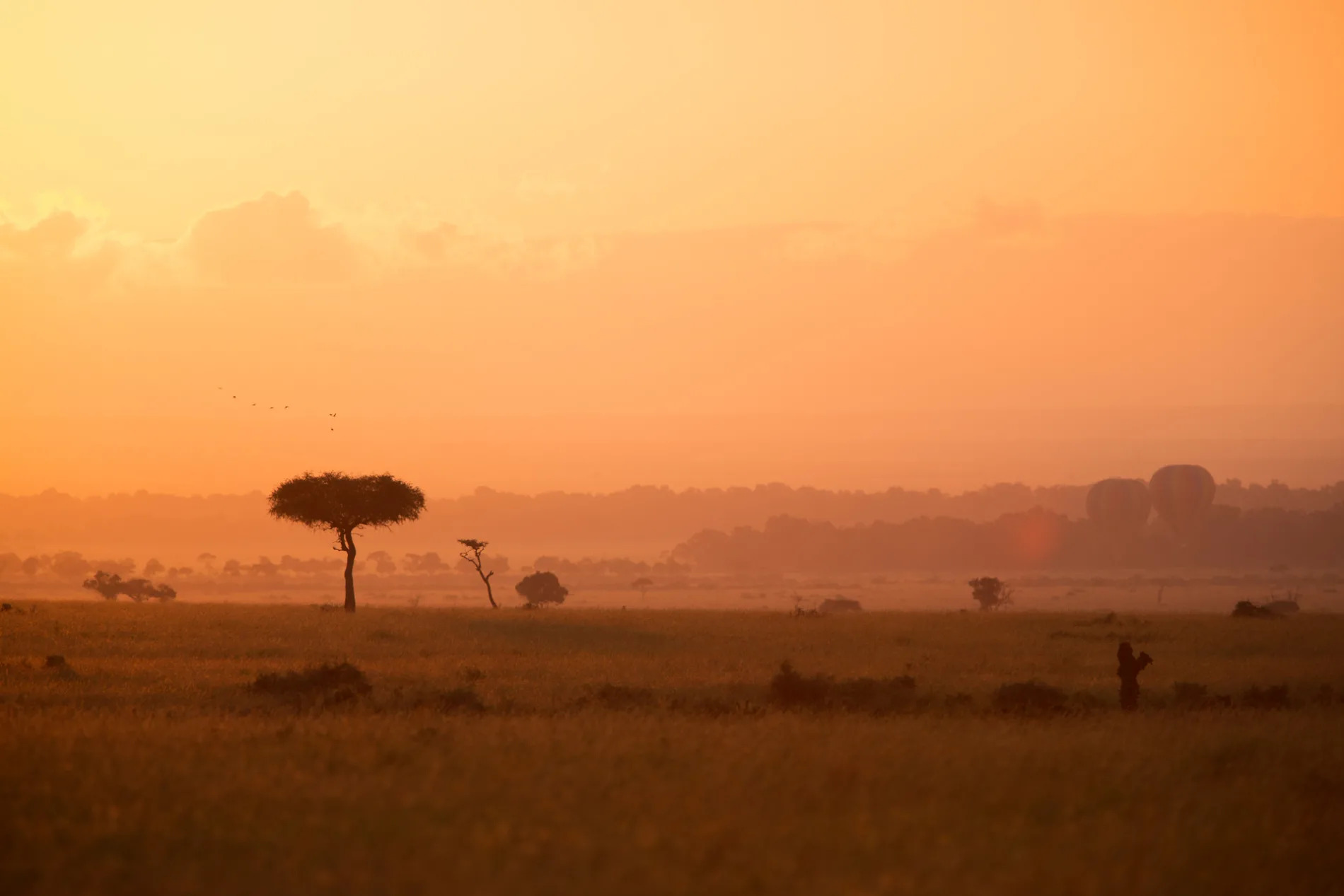
Every day starts off in a similarly breathtaking fashion – the glorious sunrise over the Maasai Mara. [f 4.0, 1/1000, ISO 320, +0.33]
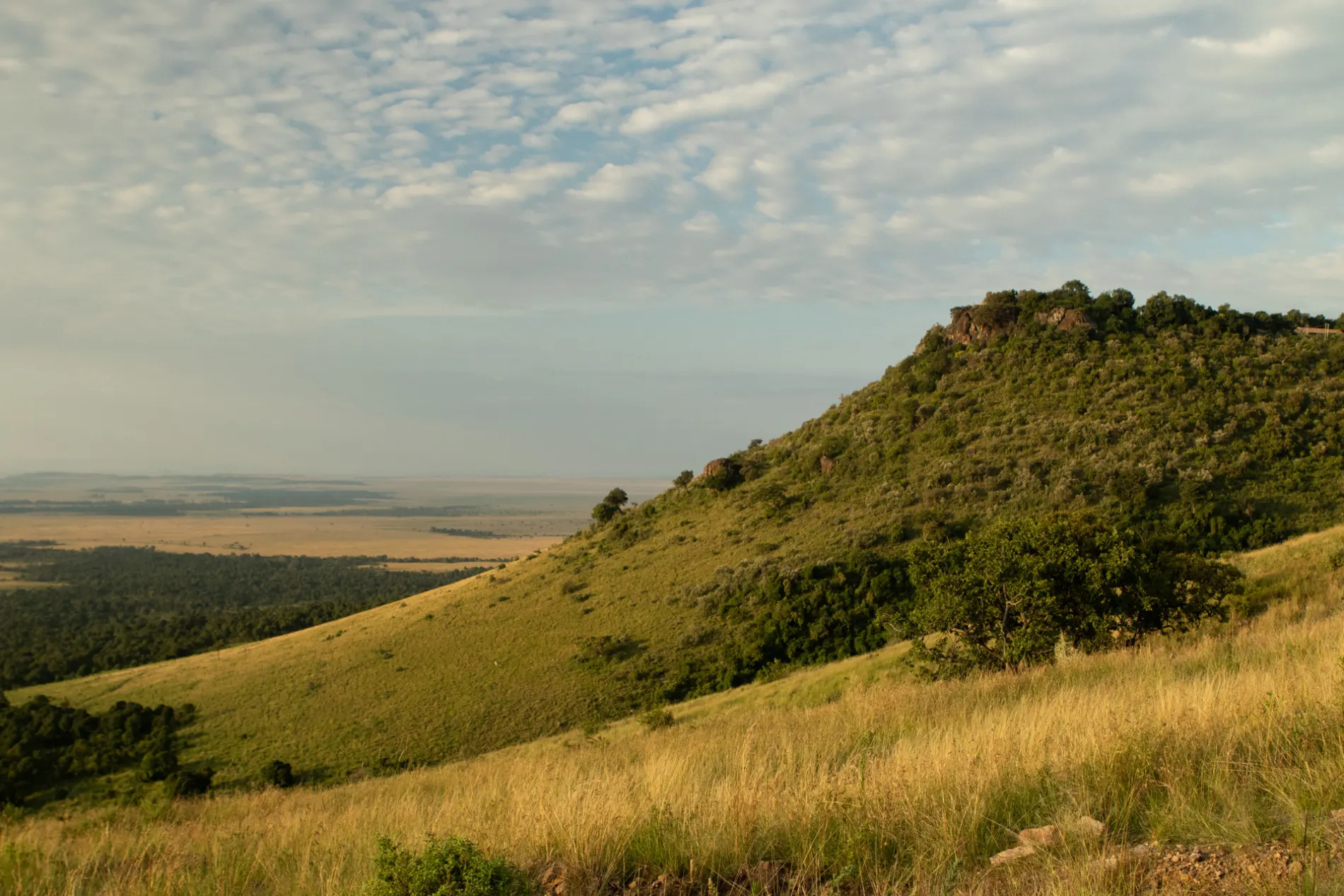
The escarpment is the perfect setting to watch the light dance across the landscape. Welcome to Angama Mara. [f 4.5, 1/400, ISO 400]
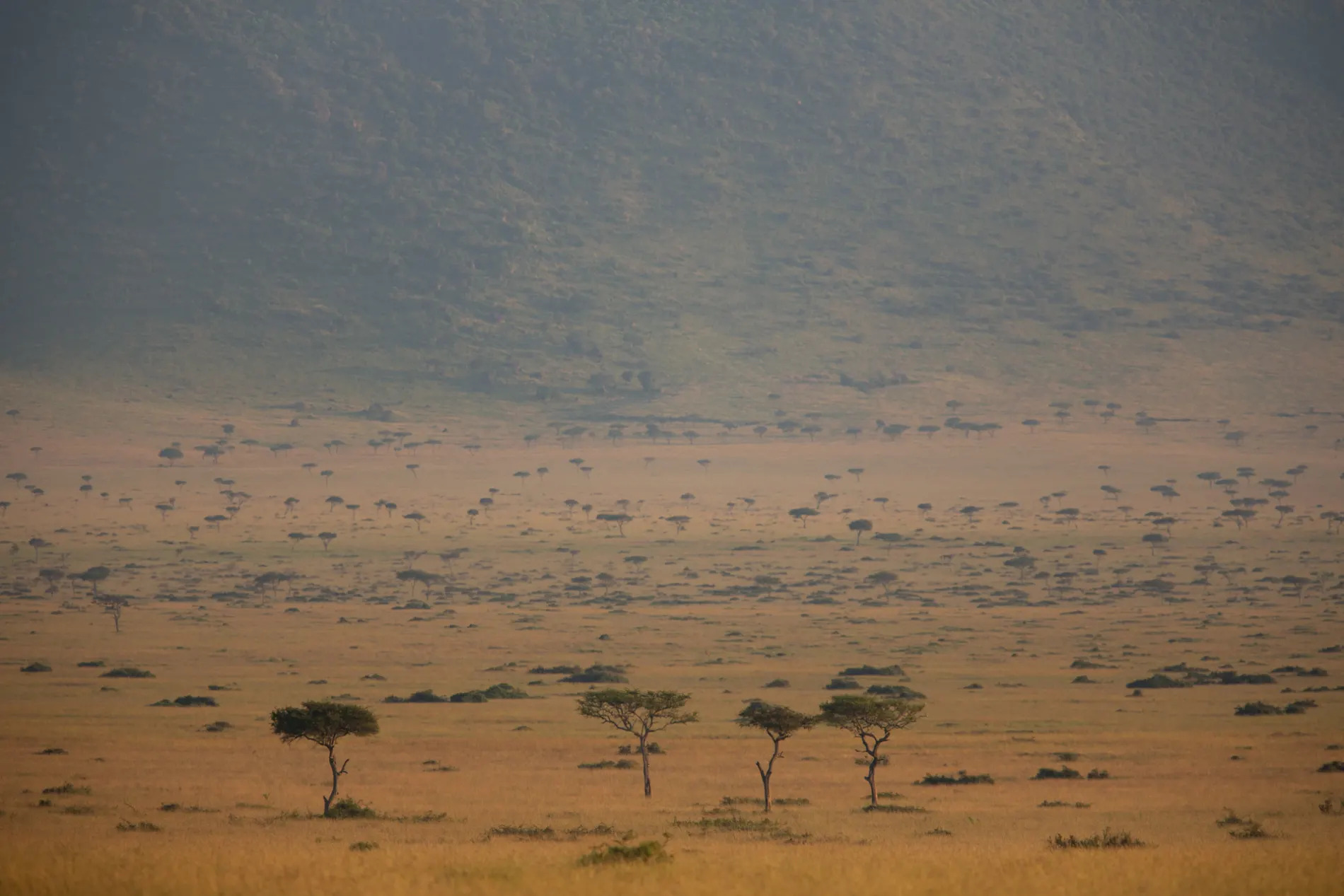
The Oloololo Escarpment provides the perfect backdrop and is one of the main reasons I love photographing the Mara Triangle. [f 4.0, 1/1250, ISO 500]
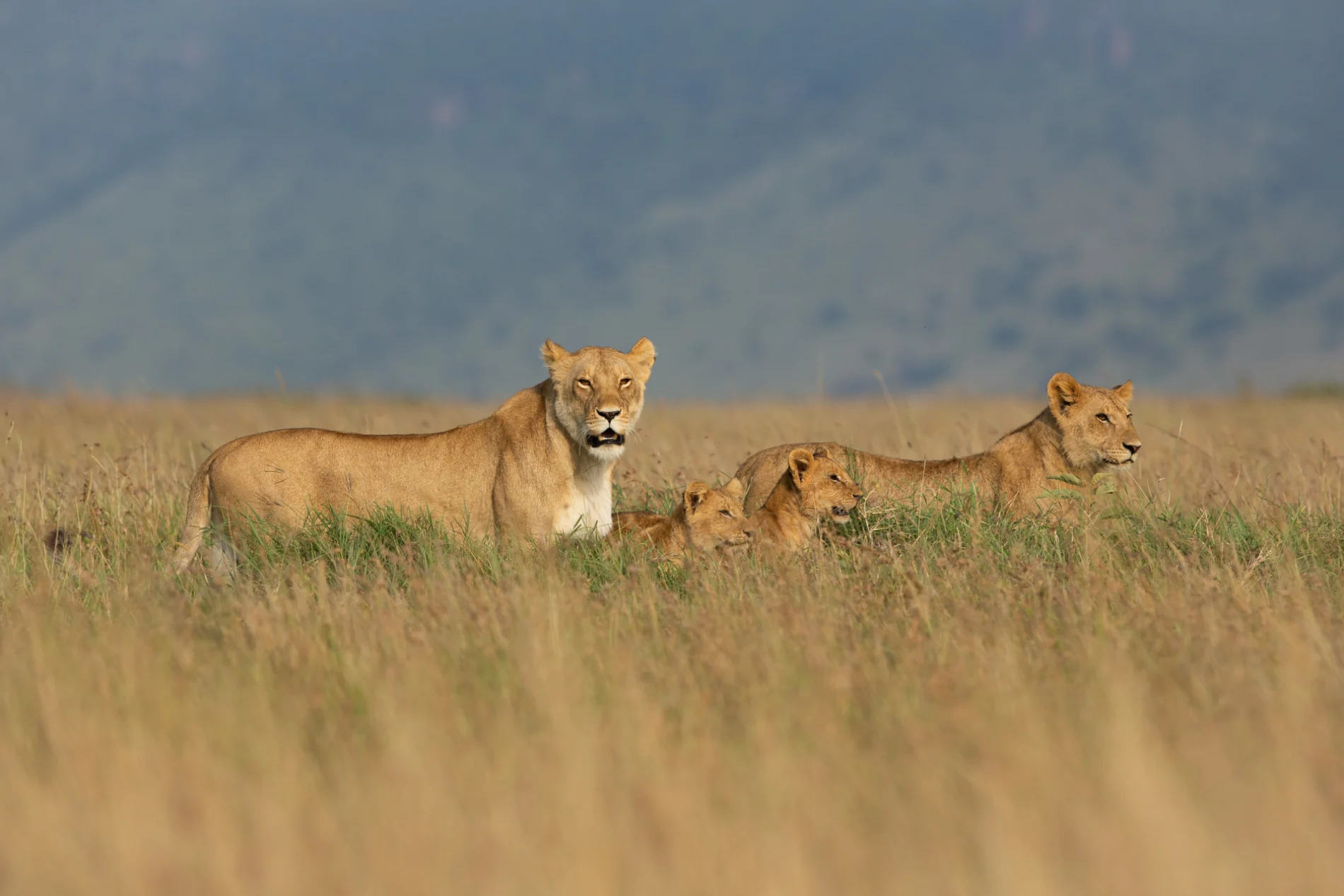
I have no qualms in admitting that this week my photographs are heavily slanted towards lions – the release of Lion King this week is causing ripples across the world. We are incredibly proud as this storyline is based in Kenya and hope that the movie will reinvigorate interest, and raise attention to the plight of the lion across Africa. Fortunately, the lion population in the Mara Triangle is doing well thanks to fantastic management by the Mara Conservancy and their relationship with the surrounding communities. This photograph, taken on Thursday, is of members of the famous Sausage Tree Pride. [f 4.5, 1/1600, ISO 200]
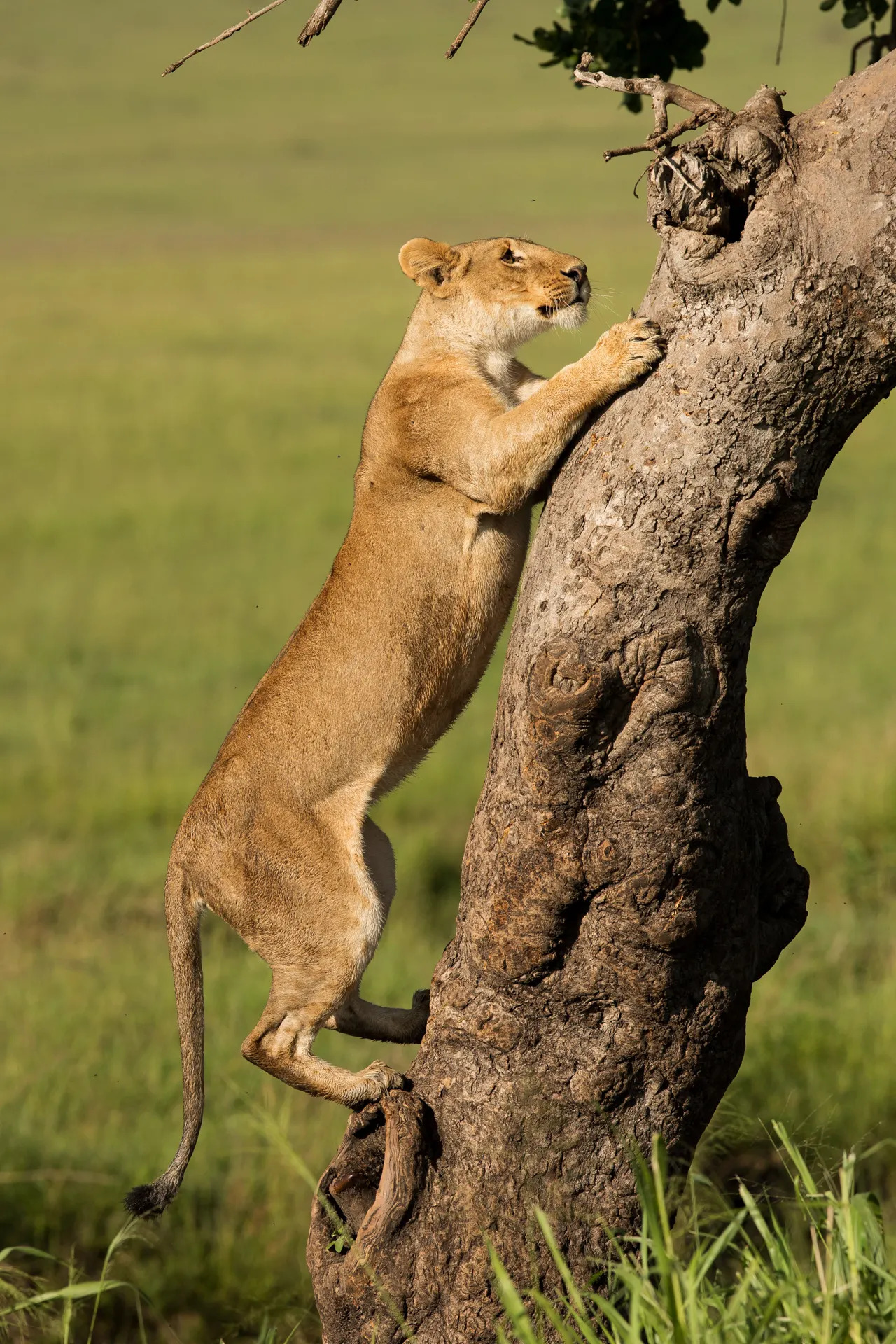
Lion don’t find it easy climbing trees. Sometimes climbing is made even more difficult by fellow pride mates who are in a playful mood – as is shown by this sequence of photos I took down by Purungat Bridge in the south-east of the Mara Triangle. [f 5.6, 1/2500, ISO 400]
 [f 5.6, 1/2500, ISO 400]
[f 5.6, 1/2500, ISO 400]
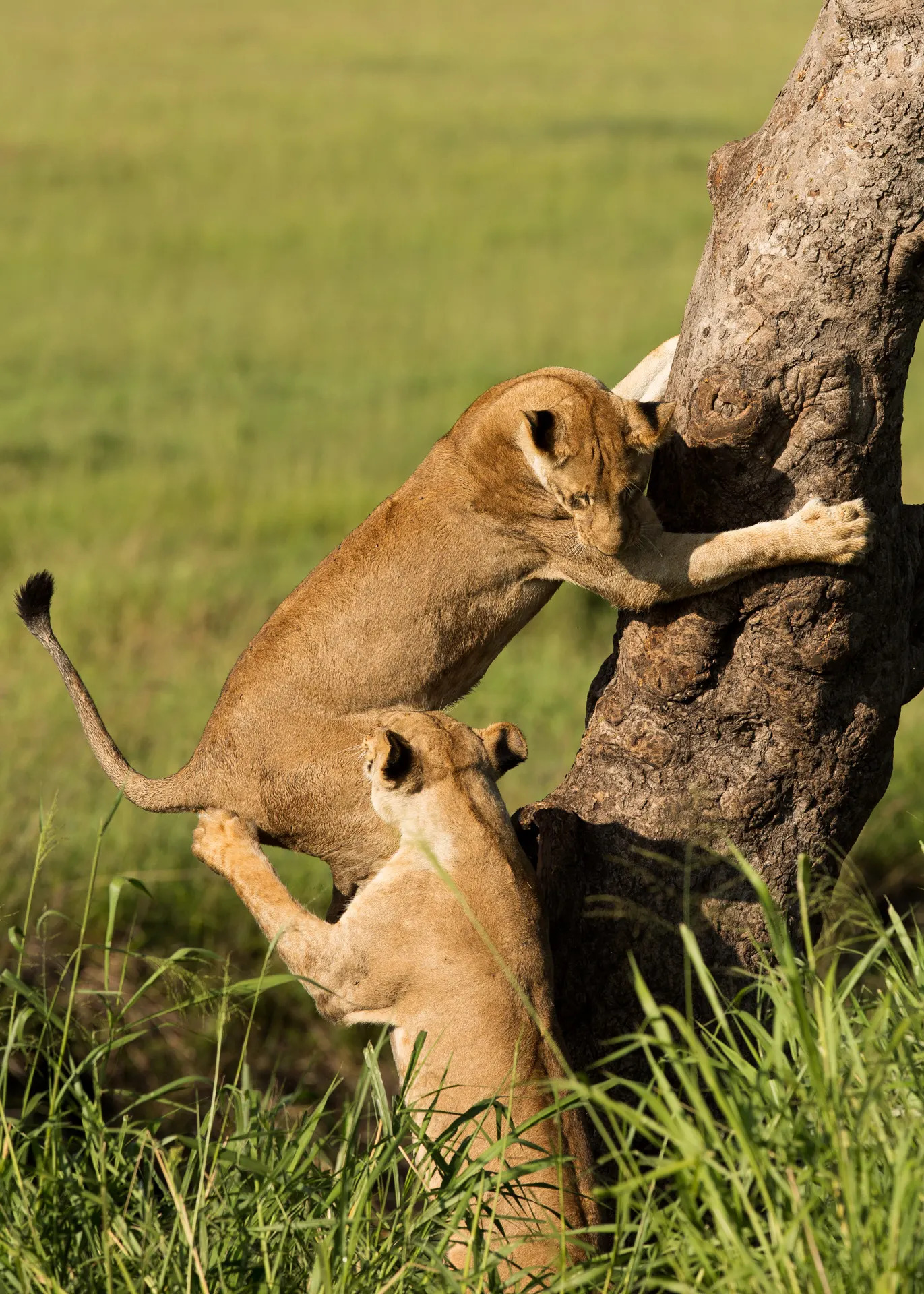 [f 5.6, 1/2500, ISO 400]
[f 5.6, 1/2500, ISO 400]
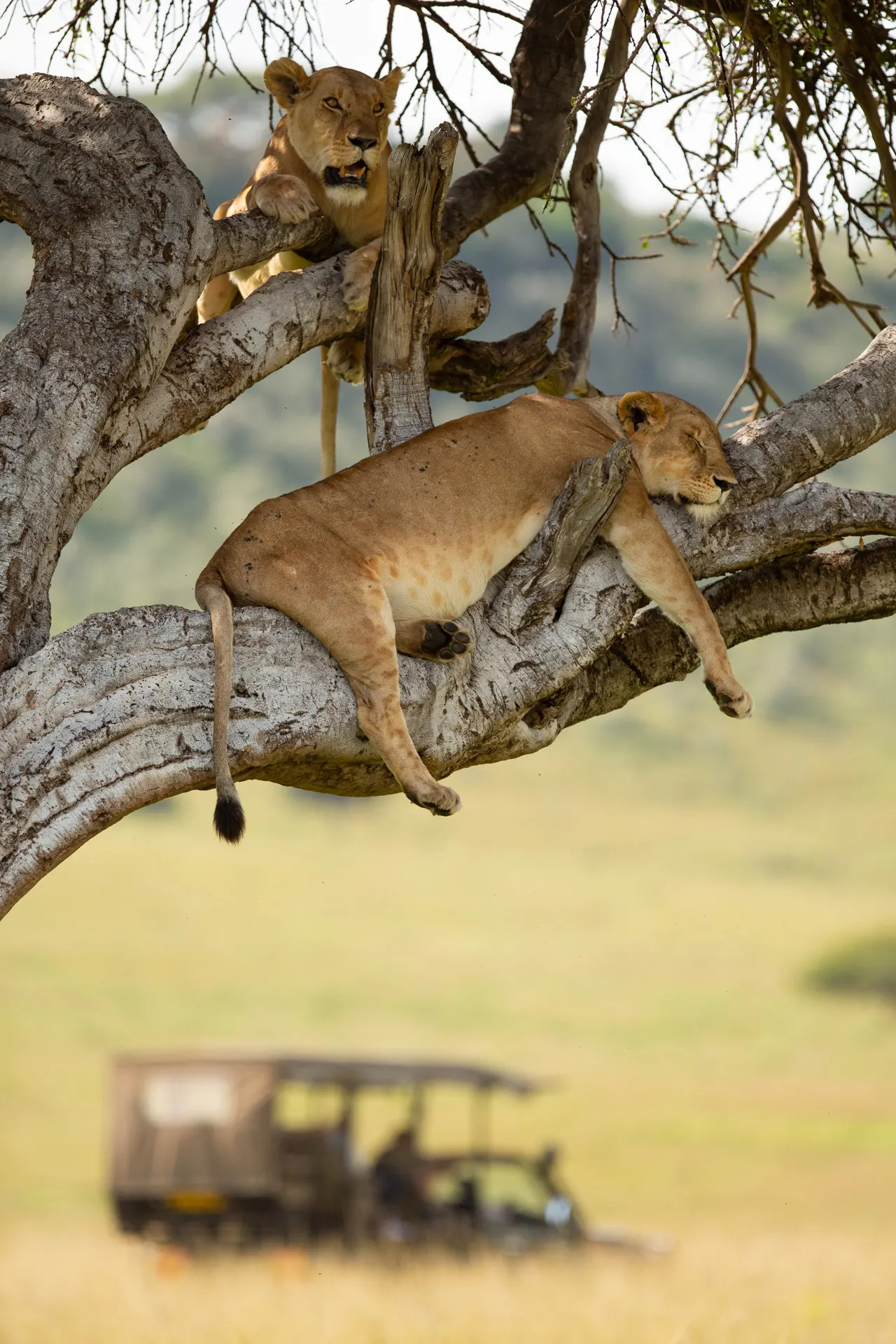
On the other hand, the Angama Pride are much more efficient tree-climbers and it is not uncommon to go out on safari and see members of this majestic pride lazing about in the canopy. [f 3.5, 1/1000, ISO 200]

Angama Pride movements continue to confuse us. It appears as if the pride may have splintered into smaller units. Here, one of the older lionesses focuses on a warthog feeding in the distance. About 30 minutes later, the warthog made off, tail upright, with lion on its heels – luckily for him, he was faster than the lioness. [f 4.5, 1/500, ISO 500]
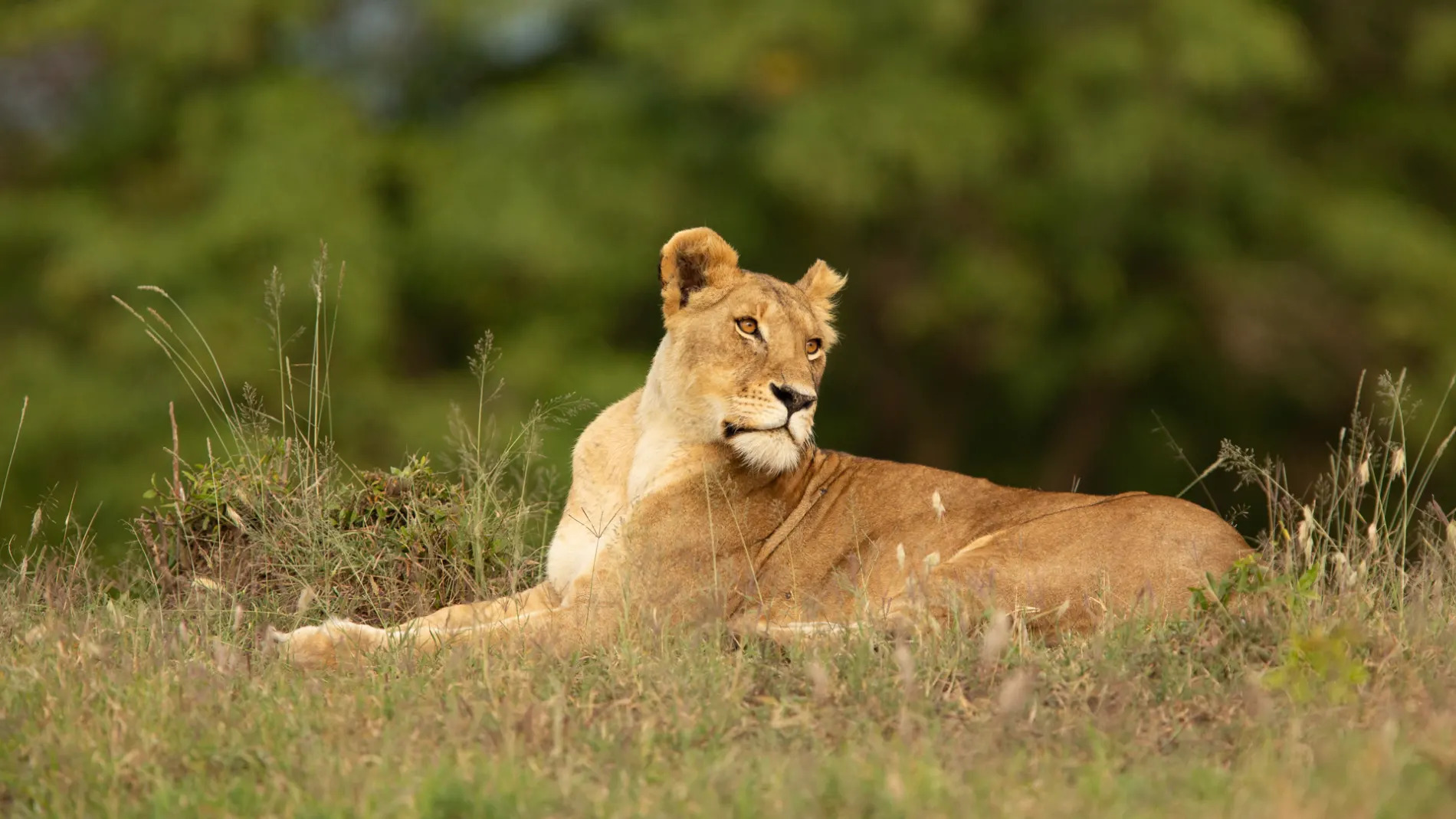
It is easy to see why we all love to photograph lions – in the morning light they are golden. [f 4.0, 1/800, ISO 800]
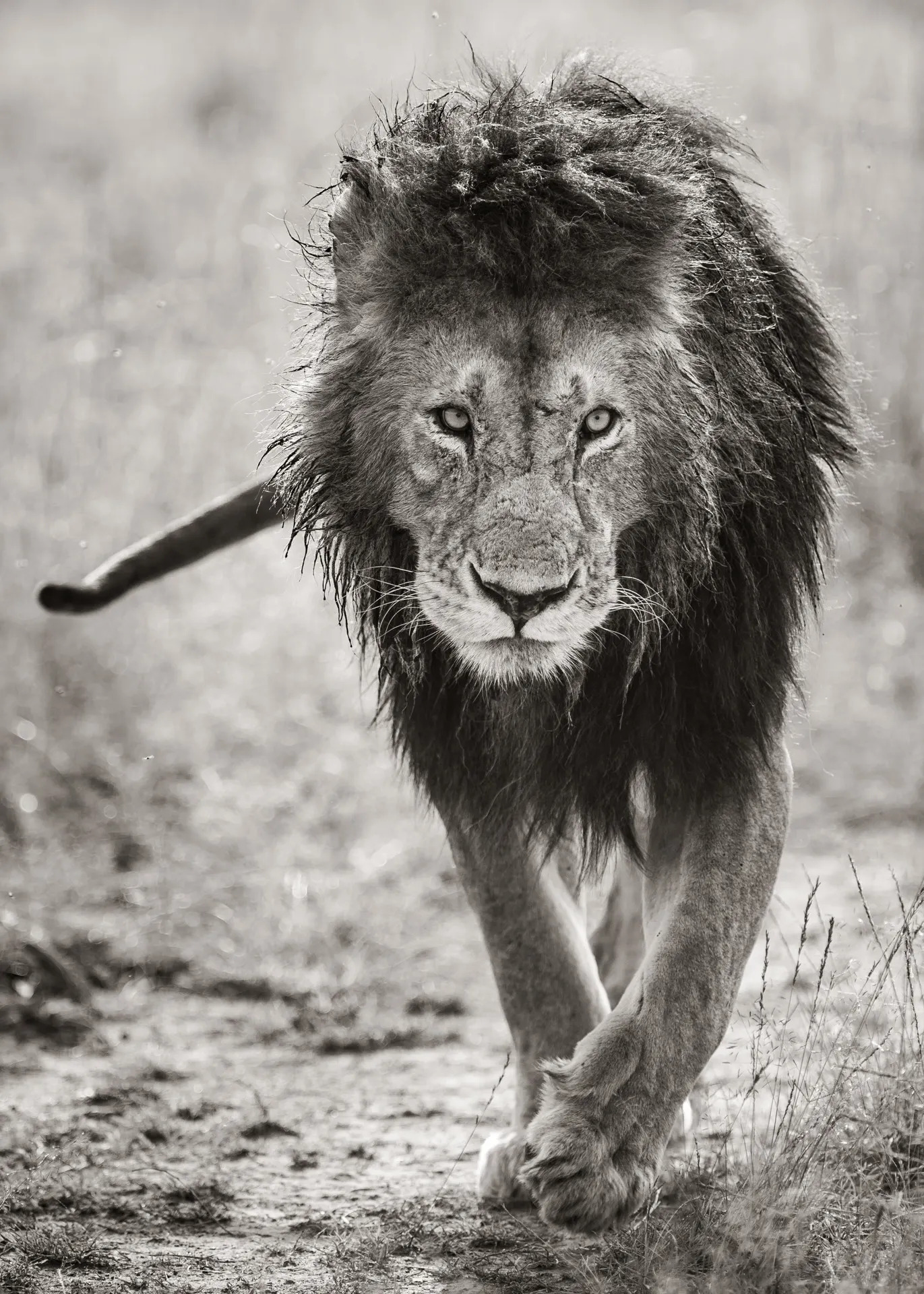
The Short-tail Male, the area’s biggest and most dominant male, is captured here patrolling the grass tracks of the northern extremities of his territory. A post-processing conversion to black and white was used to soften the massive contrasts created by tricky midday lighting. [f 4.0, 1/800, ISO 250, +0.33]
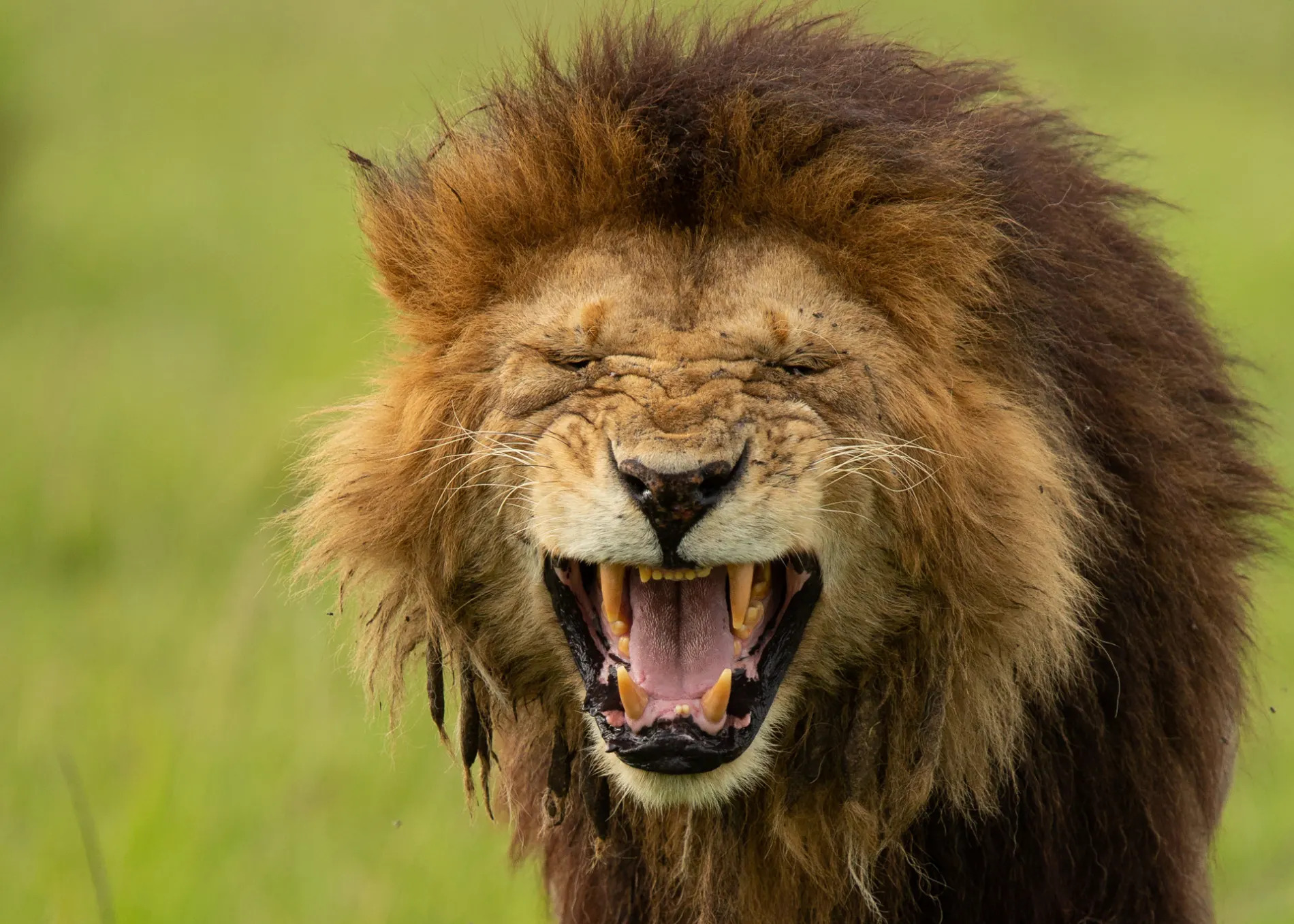
This rather comical facial expression is what is called ‘Flehmen Grimace’. The organ involved is the vomeronasal organ, otherwise known as the Jacobson’s organ. It is used to check hormone condition. The lion pictured here is inhaling the scent, closing his nostrils, and allowing the scent into the Jacobson’s organ. Incredibly, he will be able to test a female’s scent for fertility. [f 4.0, 1/1600, ISO 800, +0.33]
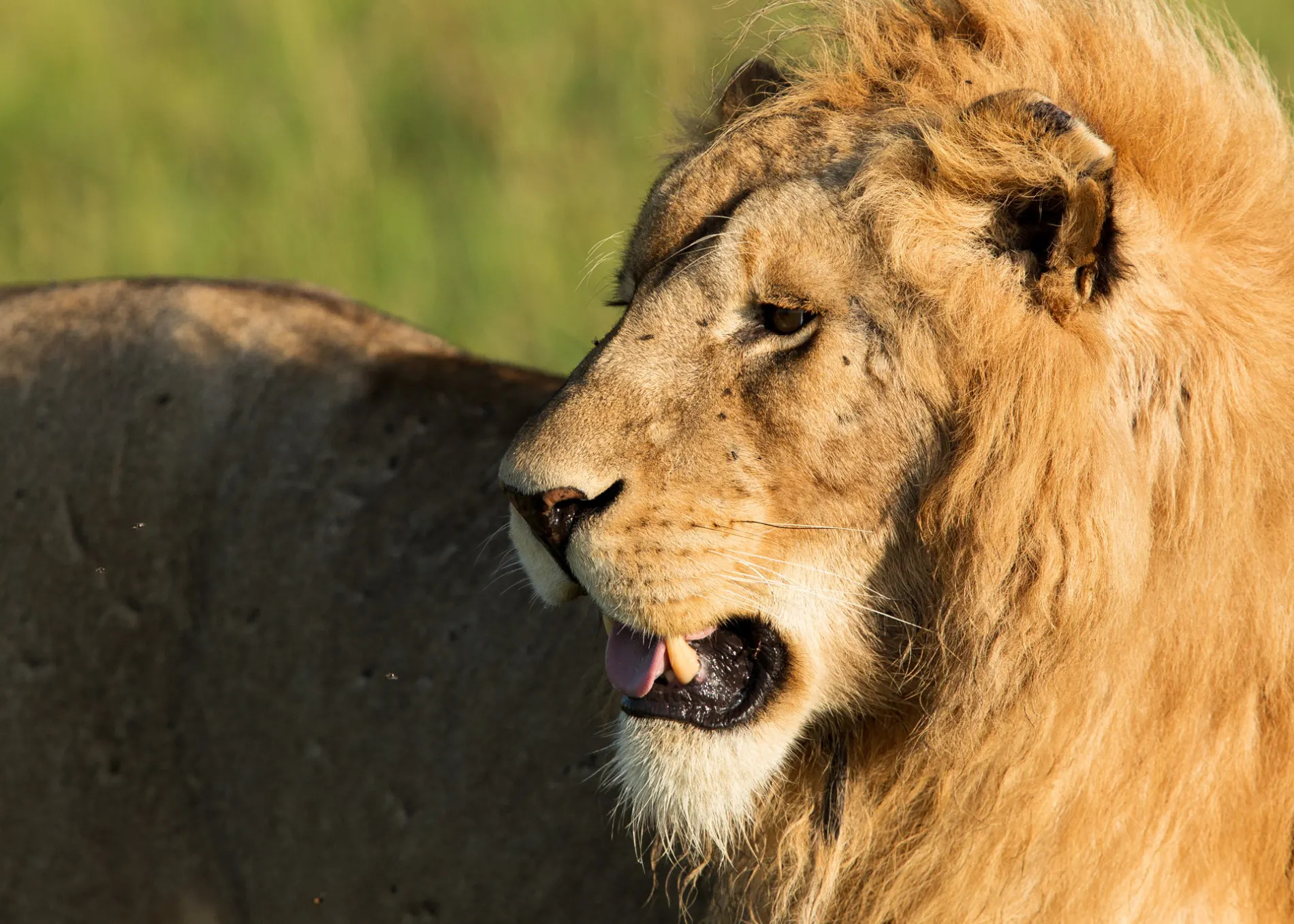
Further south in the reserve, we are starting to see a lot of this very blonde male – he is the coalition partner of Kipuli, the male of the Salt Lick Pride. This male is currently nameless, but my suggestion is Pharaoh. The reason? Not only is he a future leader and king of this land, but he spends nearly all his time around the small watering hole named after an ever-present Egyptian goose family, but for brevity sake is often simply called “Egyptian”. It makes sense, in my book, that the ruler of this land is the “Pharaoh”. I am keen to hear your thoughts on whether you like this name or not? [f 5.0, 1/1600, ISO 320]
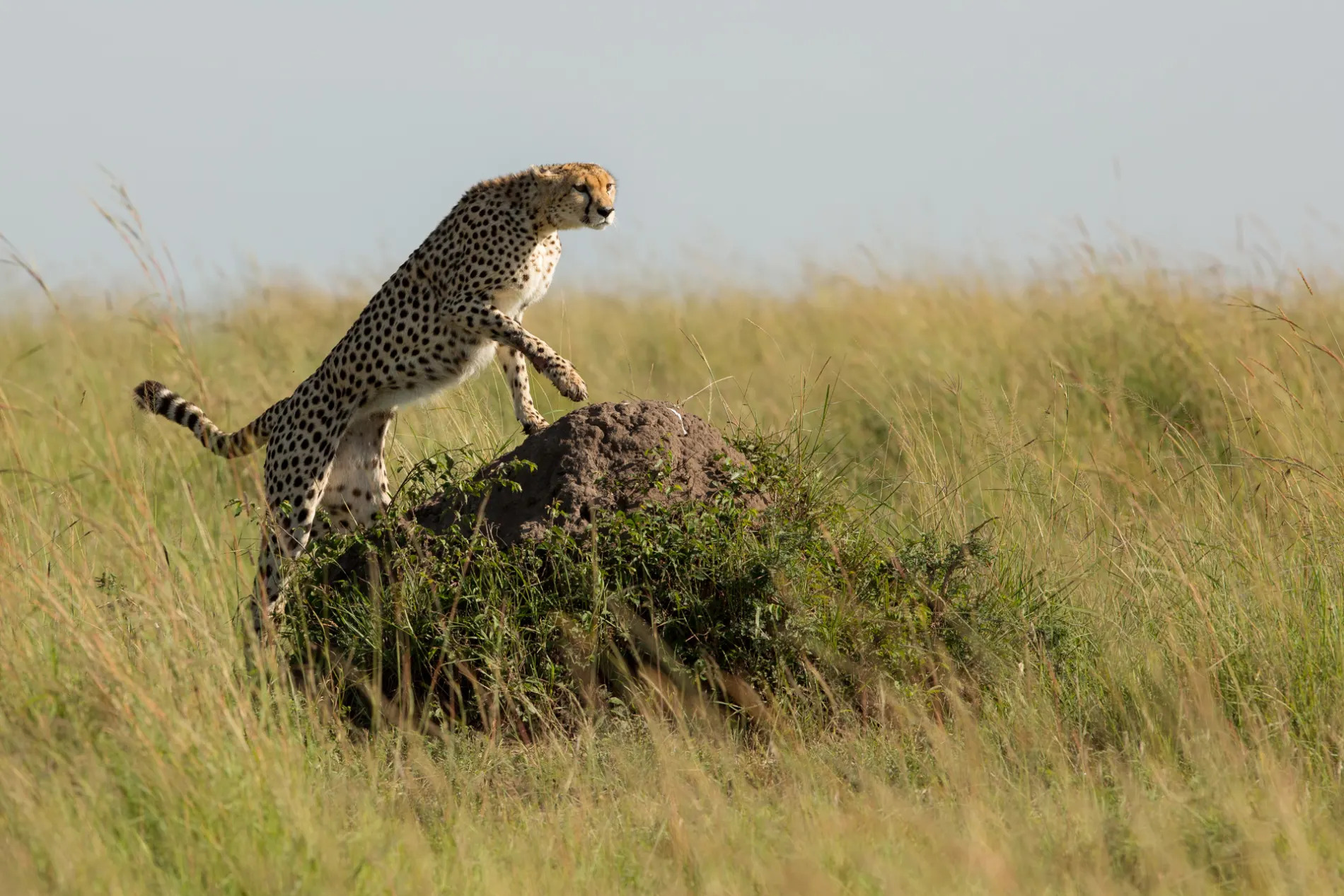
Lion may be the most commonly seen of the big cats in this area, but I certainly have a soft spot for cheetah. [f 5.6, 1/1250, ISO 250]
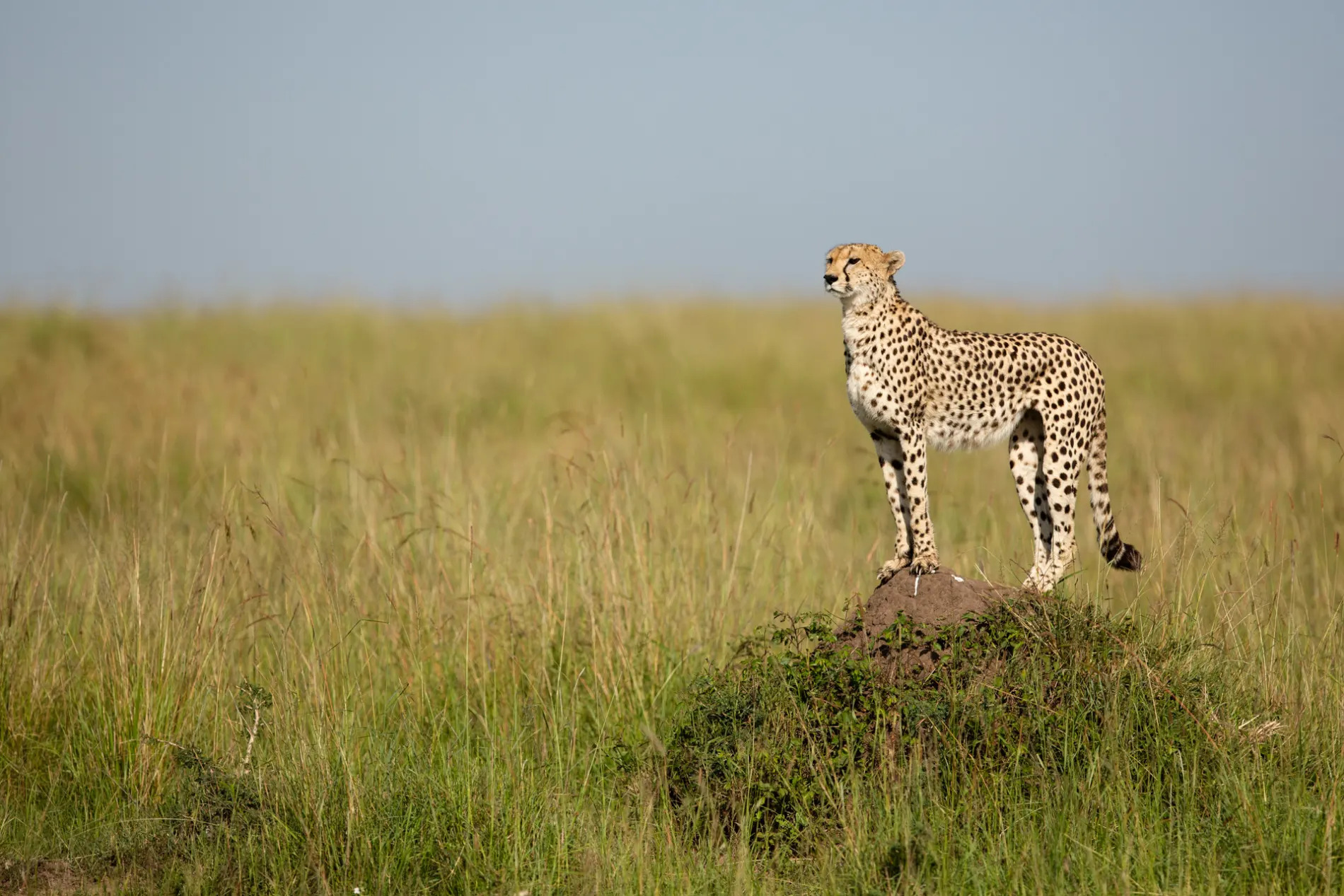
Anticipating which termite mound a cheetah could climb often results in the most wonderful of photographs. [f 3.5, 1/6400, ISO 250]

Find a cheetah, or a lion, and it is not uncommon to find a sneaky hyena in their wake. [f 4.0, 1/500, ISO 500, +0.33]

And all of this before you stop for a delicious, and well-earned, picnic breakfast out in the grasslands, under a lonesome tree, wildlife all around. [f 2.8, 1/250, ISO 160, +1.33]

I am continually amazed at how good the elephant viewing is in the Mara Triangle. As a photographer, the thing I love about elephant is they are almost always doing something interesting. [f 4.0, 1/1250, ISO 200, +0.33]

Spend enough time with elephant and you will notice they don’t like getting their tails wet. I have seen forest elephants in the Congo basin doing the same – wading through water and lifting their tails up in the air, attempting to keep them away from even the smallest splash. [f 6.3, 1/400, ISO 200, -0.33]
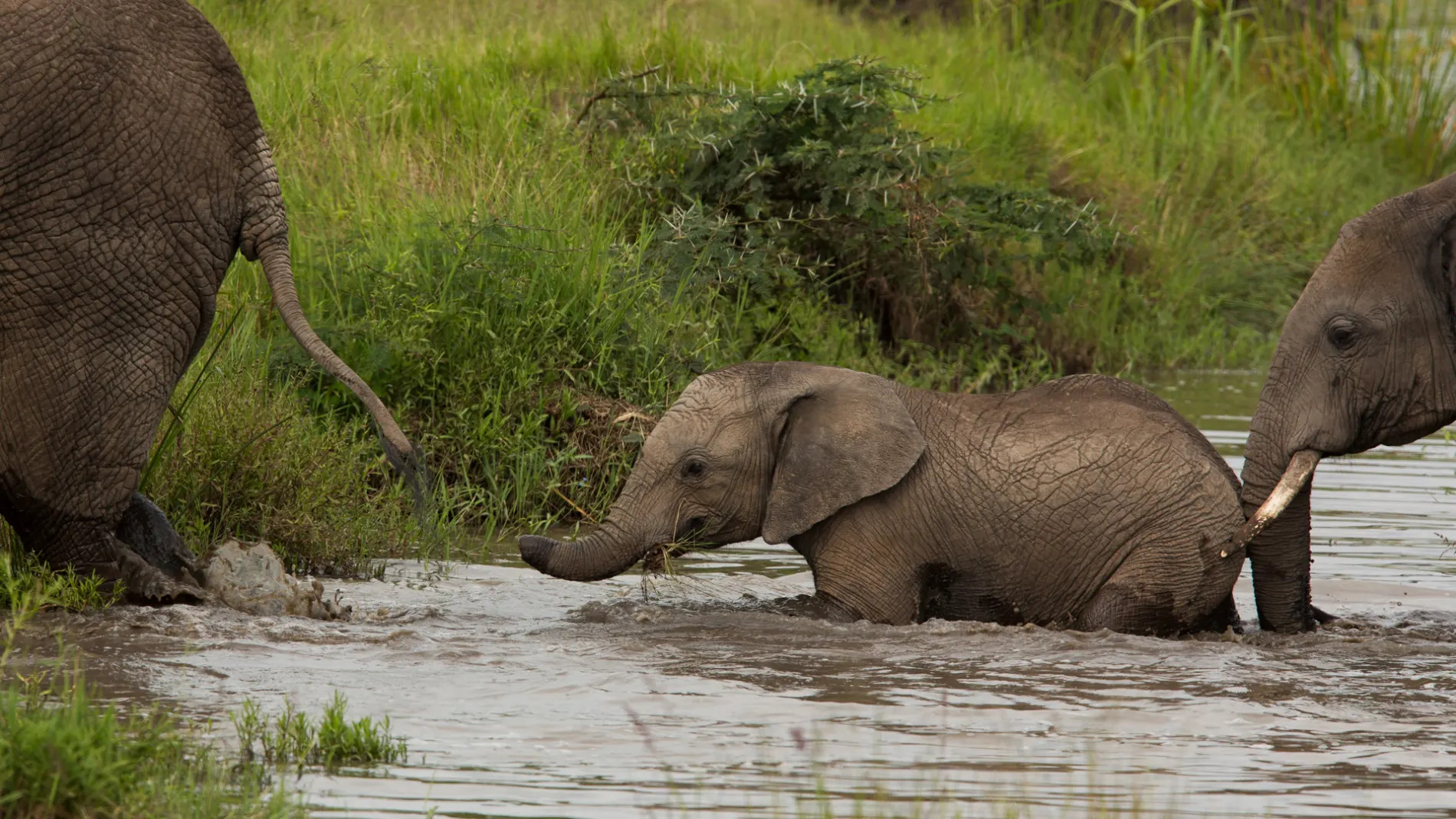
One can’t help but feel for this small elephant with her shortened trunk. Luckily, she has her family nearby to look after her. [f 7.1, 1/500, ISO 200, -0.33]

A rather unusual angle of a water monitor lizard as he scuttled underneath the car. [f 2.8, 1/2500, ISO 250, +0.33]
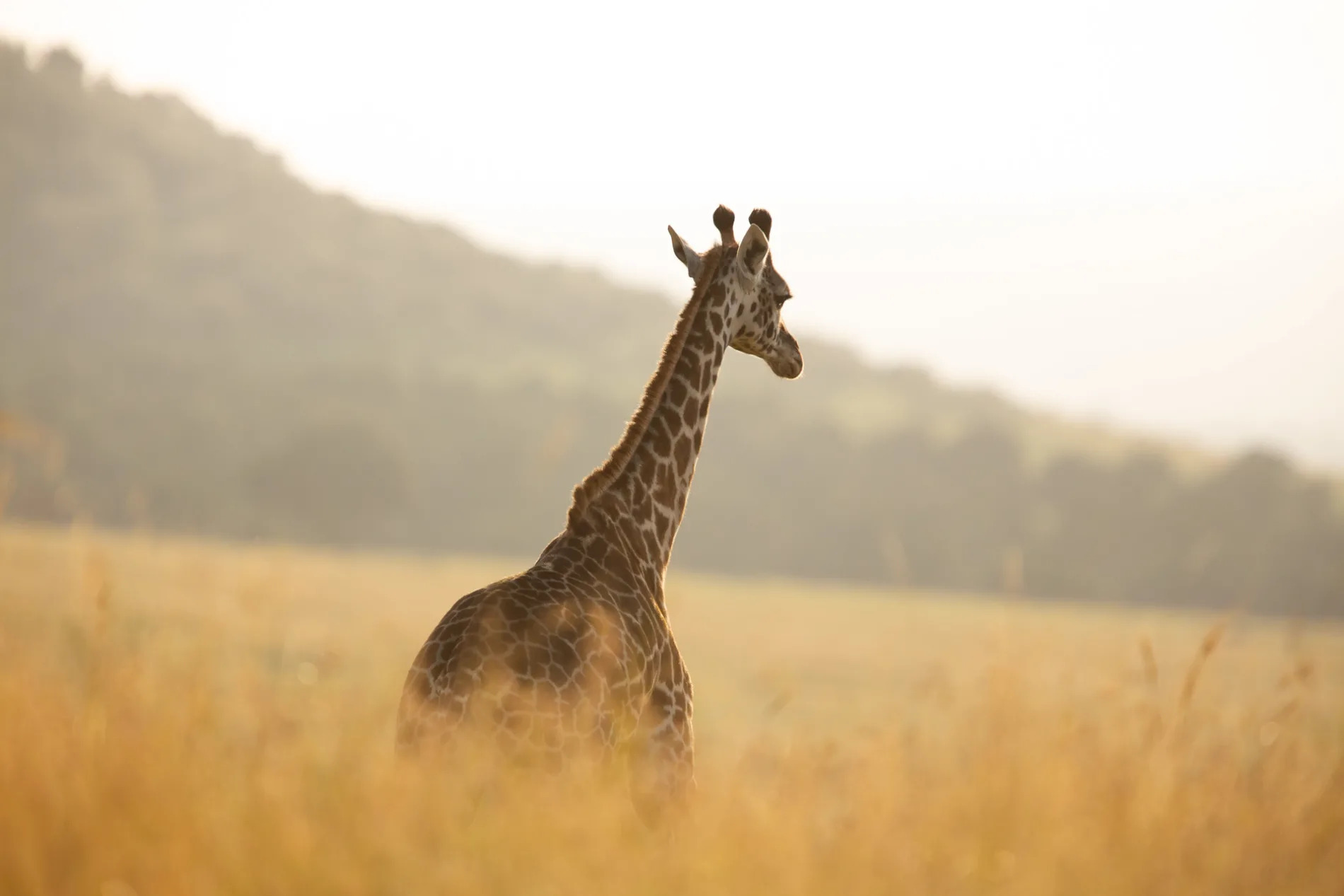
Photographing into the sun moments before sunrise can produce the most gentle of lighting – gentle, pastel colours. [f 4.0, 1/2500, ISO 640, +0.33]
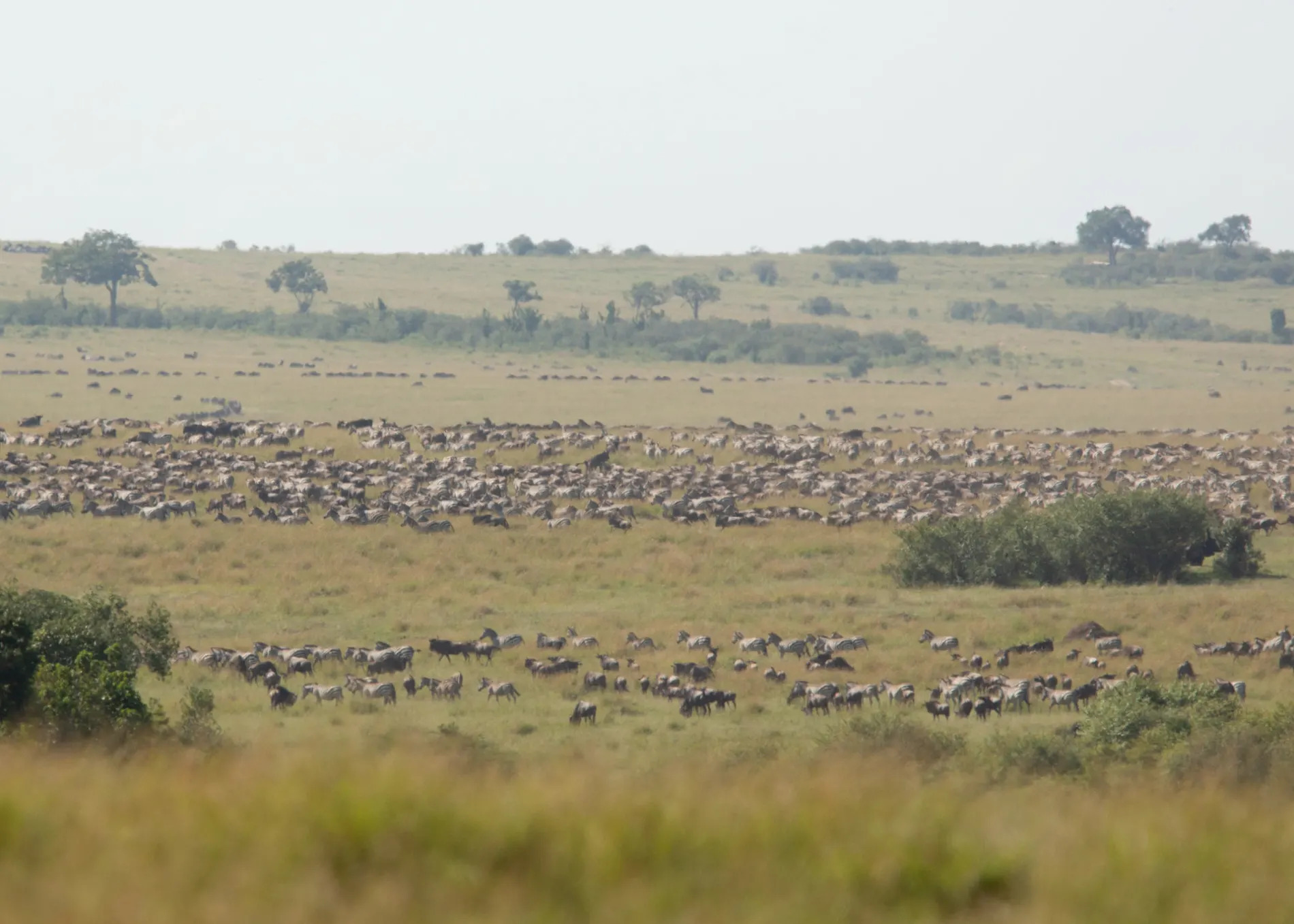
To end off, I can’t resist sharing a few images of the Great Migration as it moved further and further into the Mara during the course of the week. Although I have seen this many times before, I am blown away every time at the scale of this event. [f 4.5, 1/3200, ISO 400]
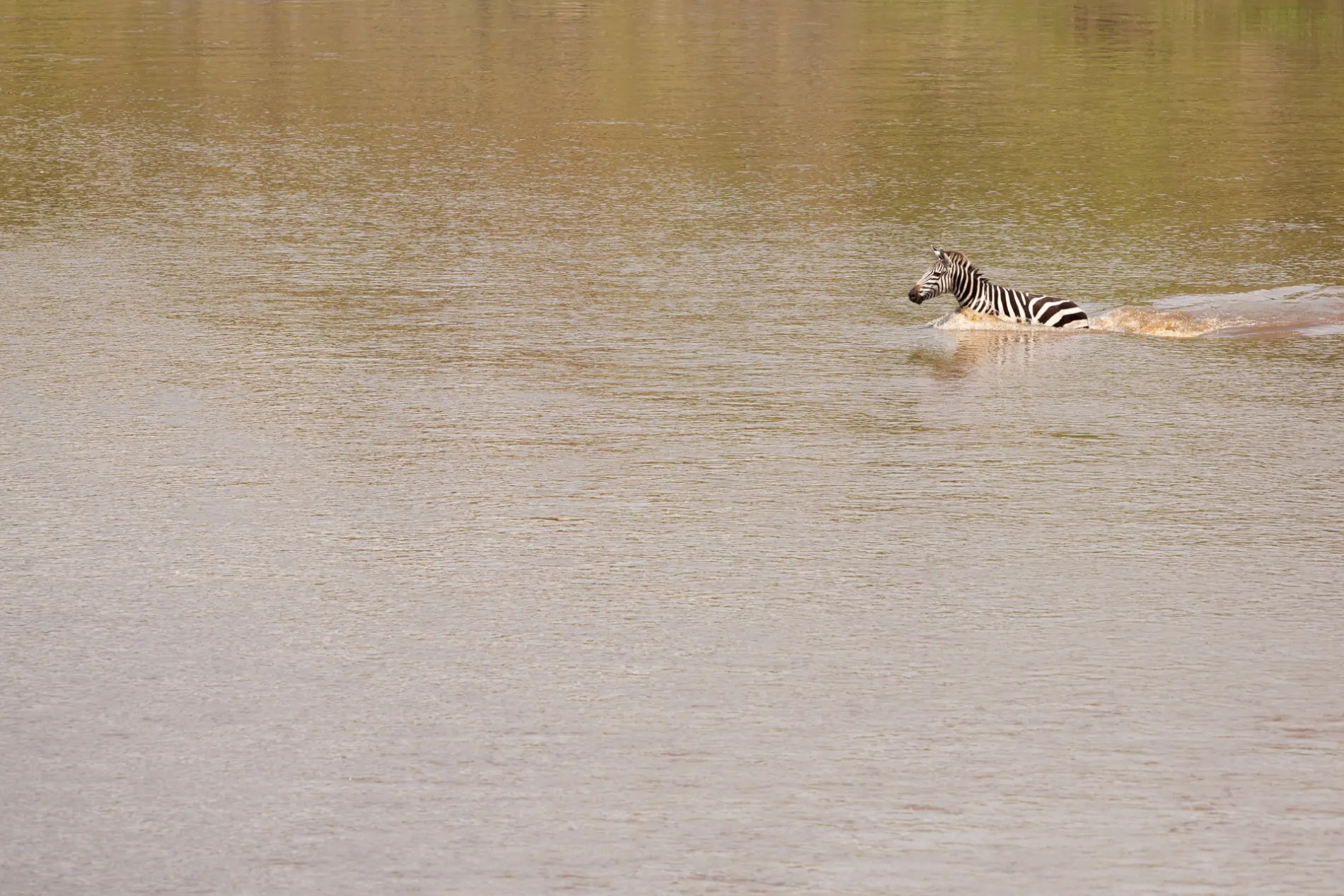
It is often a lone zebra who leads the way – a brave, or silly, individual who thinks the grass is greener on the other side. [f 5.0, 1/2500, ISO 320]
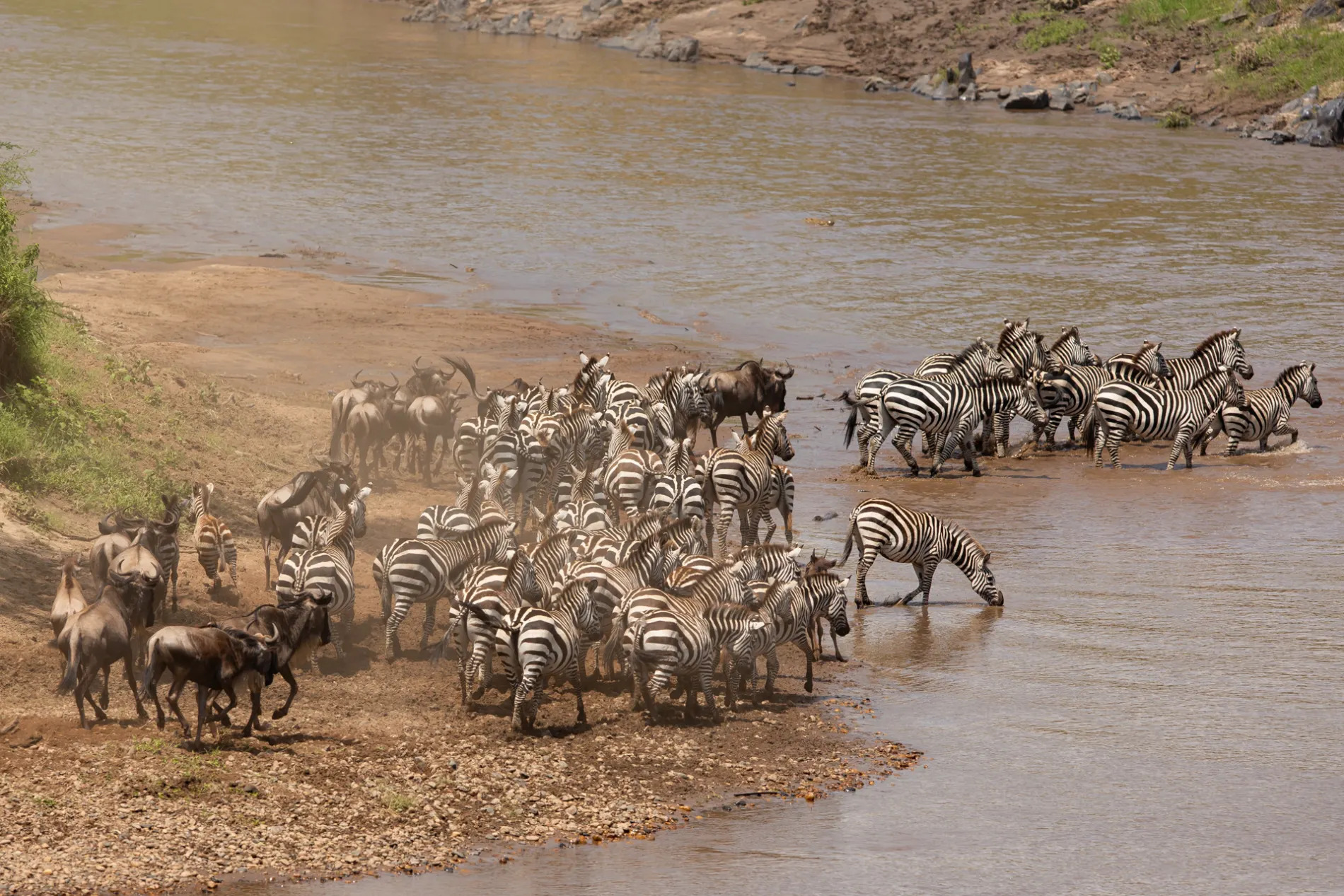
And once one starts, the rest will follow… [f 5.0, 1/1250, ISO 200, +0.33]
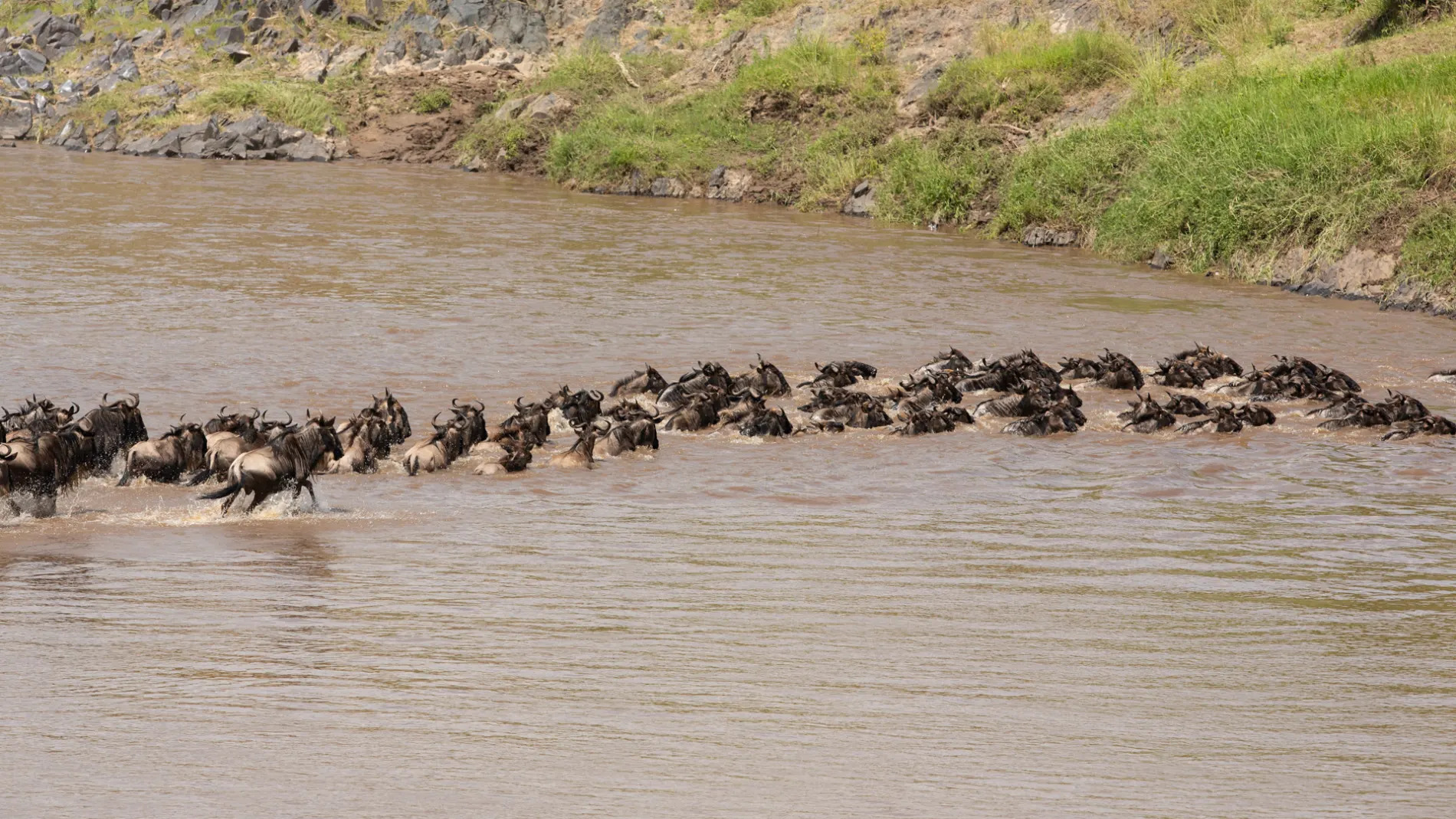
Hundreds of animals dive into the water swimming for their lives. [f 5.6, 1/1000, ISO 400, -0.33]
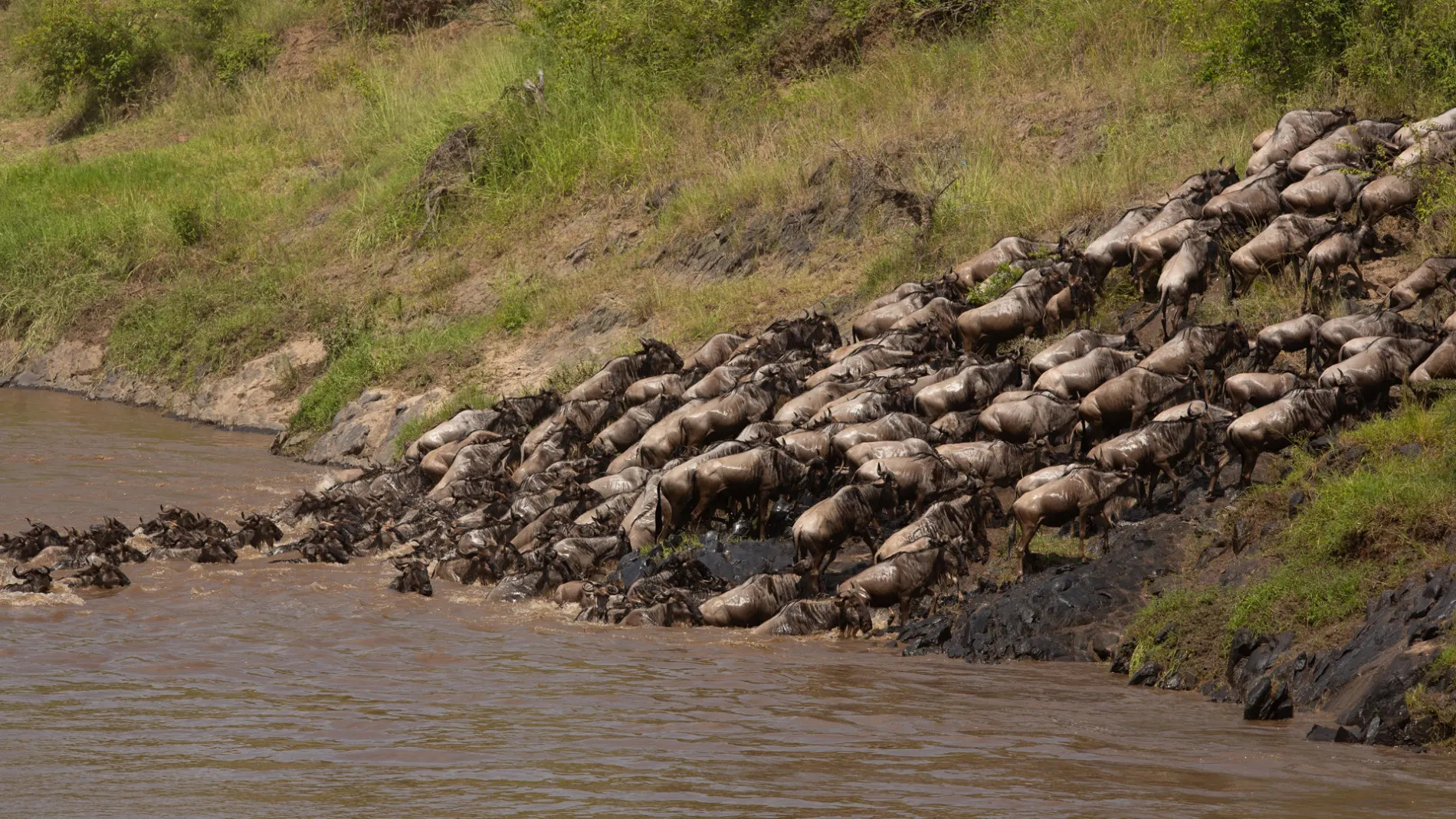
Almost unworldly scenes unfold as they spill out onto the other bank. Tomorrow more will cross, or perhaps they may even cross back to the other side. When it comes to the Great Migration, anything is possible. [f 6.3, 1/2000, ISO 400, -0.33]
THIS WEEK A YEAR AGO
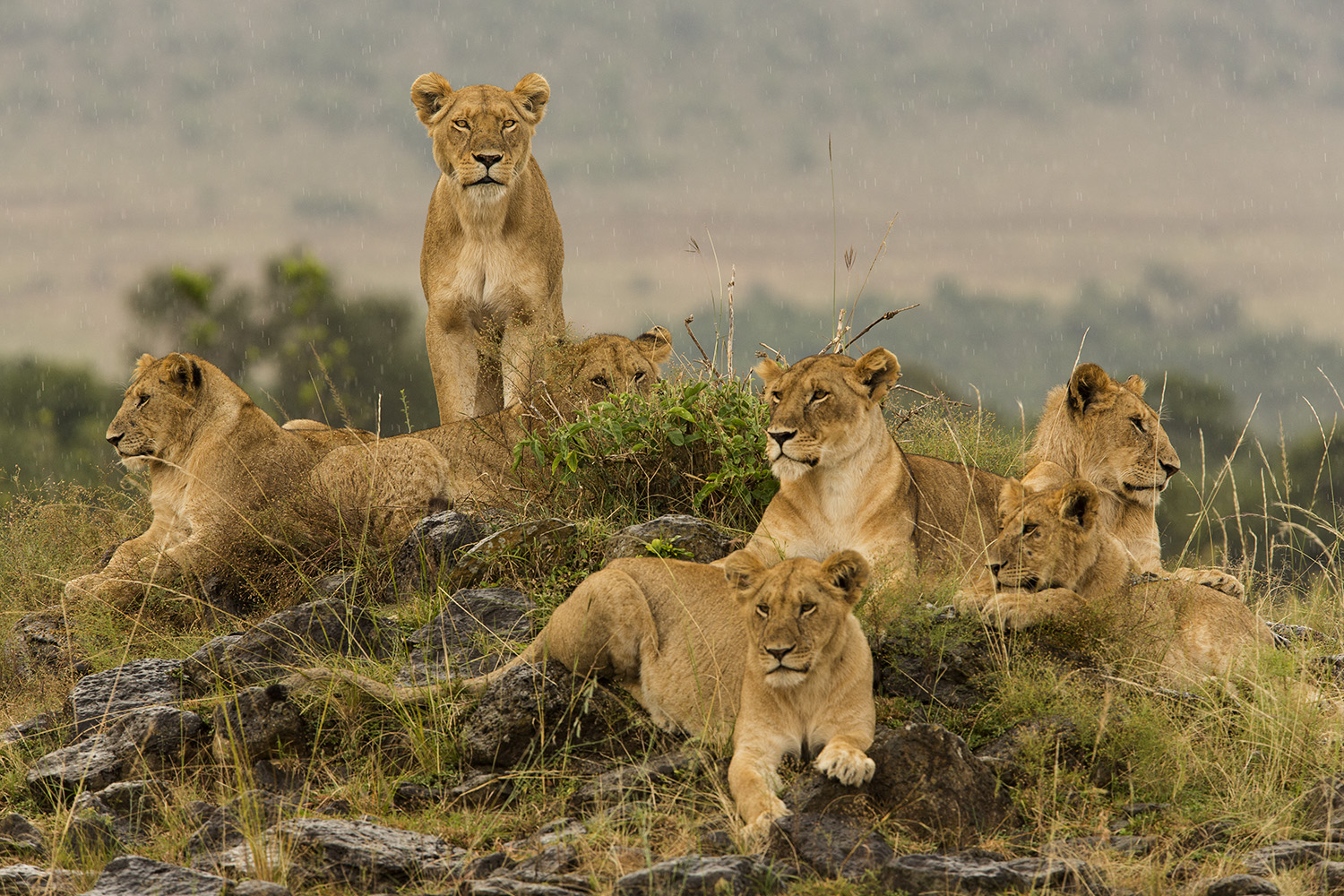
This time last year, we were having regular sightings of the Angama Pride. At this stage they numbered 16 individuals. A year later, things could not be more different. In fact we had a guide’s meeting this week to discuss various hypotheses about the splintering of this pride that we now see in small groups of two or three individuals at a time. A once mighty pride now fighting for survival in turbulent times. [f 7.1, 1/400, ISO 800, +0.33]
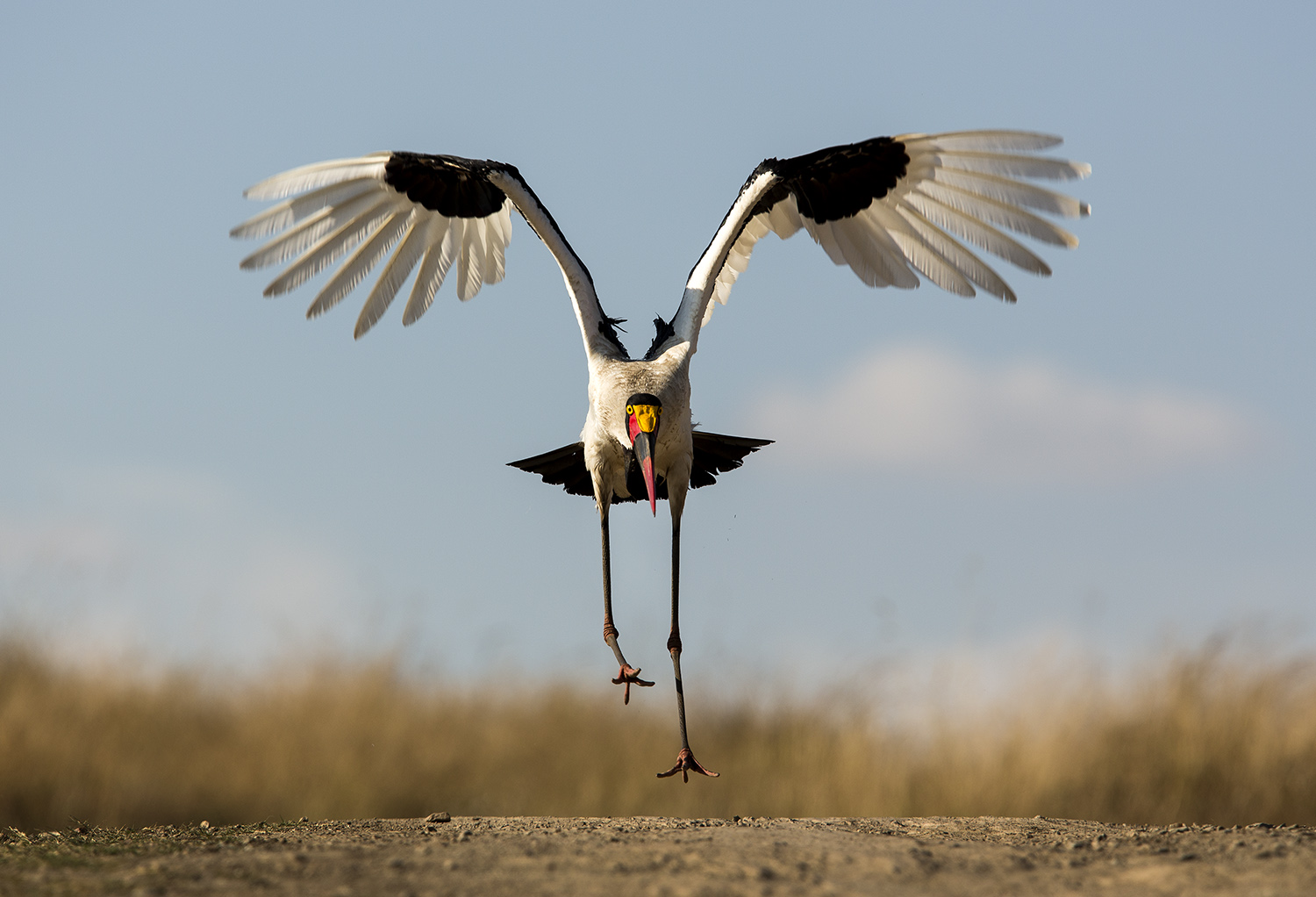
I am breaking with tradition here by including a second photograph from last years This Week at Angama. The reason? This image of a saddle-billed stork was without a doubt one of my favourite photographs from 2018. In fact, I would be so bold to say that This Week At Angama #24 was an absolute cracker – I highly advise you to go back and have a look. [f 5.6, 1/1600, ISO 160]
TAGGED WITH: Maasai Mara, Angama Mara, Great Migration, Mara Triangle, Wildebeest, Cheetah, Lions of the Mara



COMMENTS (2)
Roger Wright
July 19, 2019Fabulous photographs that make me yearn to return to the Mara again. The commentary is inspiring. Thank you.
REPLYNicky Fitzgerald
July 20, 2019Thank you Roger – we love getting feedback from our readers
REPLY